Shankar IAS Summary: India and Climate Change - 3 | Famous Books for UPSC Exam (Summary & Tests) PDF Download
Introduction of Labelling Program for Appliances
In 2006, a program was started to label the energy efficiency of appliances. This labeling system uses stars to compare how energy-efficient different appliances are. It applies to fluorescent tube lights, air conditioners, refrigerators, and distribution transformers.

The labels show how much energy an appliance uses, helping consumers make smart choices. For example, the Bureau of Energy Efficiency(BEE) requires refrigerators to display an energy efficiency label, and soon, they'll do the same for air conditioners. The goal is to encourage manufacturers to meet certain standards for electrical appliances, leading to saving a significant amount of electricity each year.
Green Buildings
Buildings play a big role in polluting the air in cities and contributing to climate change. From construction to use and eventually demolition, buildings use up energy, water, and materials while producing waste. Green building aims to tackle these pollution issues in a holistic and scientific way.
 Future of Green Buildings in India
Future of Green Buildings in India
In simple terms, a green building:
- Uses Fewer Resources: It tries to use as little natural resources as possible during construction and operation.
- Minimizes Non-Renewable Resources: It aims to reduce the demand for non-renewable resources and uses them efficiently when needed.
- Promotes Reuse and Recycling: It encourages the reuse and recycling of available resources.
- Incorporates Renewable Resources: It utilizes renewable resources for sustainability.
While it may cost a bit more to design and build a green building, it ends up being cheaper to operate in the long run. Green buildings have significant environmental benefits and provide better living and working conditions for occupants.
Key features of a green building include:
- Efficient Construction: Uses efficient materials and construction practices.
- Optimized Energy Usage: Minimizes energy consumption by using efficient equipment for lighting, air-conditioning, etc.
- Renewable Energy: Incorporates renewable energy sources to generate power on-site.
- Waste and Water Management: Efficiently manages waste and water resources.
- Indoor Comfort: Provides comfortable and hygienic indoor conditions.
Creating a green building involves a collaborative effort from architects, landscape designers, and consultants in various fields. They work together to evaluate the environmental impact of each design decision, finding solutions to minimize negative effects and enhance positive impacts.
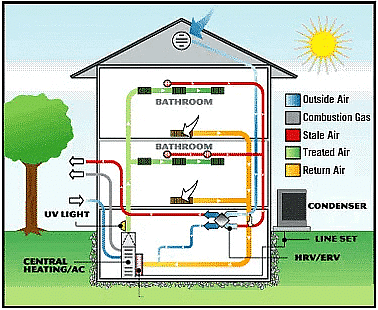 HVAC Process Mechanism
HVAC Process Mechanism
This approach considers factors like HVAC (heating, ventilation, and air conditioning), lighting, electrical systems, water heating, renewable energy, eco-friendly materials, and indoor environmental quality. The goal is to create a building that is environmentally friendly throughout its life cycle.
GRIHA
GRIHA, which stands for Green Rating for Integrated Habitat Assessment, is a system created by TERI in collaboration with the Ministry of New and Renewable Energy, Government of India. GRIHA, meaning 'Abode' in Sanskrit, is a voluntary scheme aimed at assessing and promoting green buildings.
Objective: The primary goal of GRIHA is to assist in designing environmentally friendly buildings and evaluating their overall 'greenness.' GRIHA aims to achieve efficient resource utilization, enhanced resource efficiency, and improved quality of life within buildings.
The basic Features
1. Rating Tool:
- Purpose of GRIHA:
- Assessment Tool: GRIHA serves as a tool to help people evaluate how well their building performs compared to national benchmarks.
- Universal Applicability: It is suitable for all types of buildings across various climatic zones in the country.
Measurement and Management:
Quantification Principle: Following the idea of "What gets measured, gets managed," GRIHA quantifies aspects such as energy consumption, waste generation, and adoption of renewable energy.
Management Goal: The aim is to effectively manage, control, and reduce these aspects to the best possible extent.
Holistic Evaluation:
Life Cycle Assessment: GRIHA assesses a building's environmental performance over its entire life cycle, providing a comprehensive standard for what defines a 'green building.'
Definitive Standard: It establishes a definitive standard for environmental friendliness in buildings.
Balancing Practices:
Incorporating Principles: The rating system is based on accepted energy and environmental principles.
Balance Struck: GRIHA seeks to strike a balance between established national and international practices and emerging concepts.
Guideline Revision: The guidelines and criteria are subject to revision every three years. This allows for the inclusion of the latest scientific developments during this period.

- Basic Features:
Development Purpose: GRIHA is developed to assist in the design and evaluation of new buildings, particularly those still in their early stages.
Life Cycle Assessment: It assesses a building's predicted performance not just during operation but throughout its entire life cycle, from inception to operation.
Rating System:
- Categories and Criteria:
- The GRIHA rating system evaluates buildings based on 34 criteria grouped into 4 categories.
- These categories focus on aspects like choosing the right location, using resources efficiently, maintaining the building well, and encouraging innovative practices.
2. Rating System:
- Categories and Criteria:
- The GRIHA rating system evaluates buildings based on 34 criteria grouped into 4 categories.
- These categories focus on aspects like choosing the right location, using resources efficiently, maintaining the building well, and encouraging innovative practices.
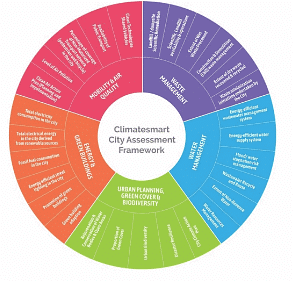
- Mandatory and Optional:
- 8 criteria are non-negotiable (mandatory), meaning every project must meet these standards.
- 4 criteria offer some flexibility (partly mandatory).
- The remaining criteria are optional, providing choices for the project based on its specific needs and goals.
- Points System:
- Each criterion has a certain number of points assigned to it.
- Projects earn points by fulfilling these criteria. The more points a project accumulates, the better its environmental performance.
- Certification Levels:
- The rating system classifies projects into different certification levels, ranging from one star to five stars.
- These levels signify how well the project adheres to sustainable and eco-friendly practices. Higher star levels indicate a more environmentally responsible building.
- Minimum Points for Certification:
- To achieve certification, a project needs a minimum of 50 points.
- This means that to be recognized as environmentally friendly, a building must meet a certain standard of sustainable practices, as reflected in the earned points.
The benefits
The GRIHA system and its processes aim to benefit the community at large.
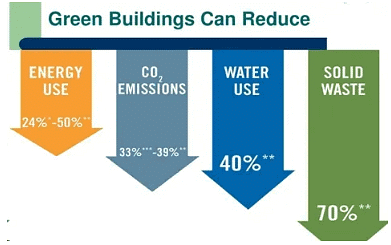 Benefits of Green Buildings
Benefits of Green Buildings
- Environmental Improvement:
- Reducing Greenhouse Gas (GHG) emissions,
- Cutting down on energy consumption,
- Easing the strain on natural resources.
- Comfortable Energy Use: Achieving reduced energy consumption while maintaining comfort levels.
- Preservation of Nature:
- Preventing the destruction of natural areas, habitats, and biodiversity.
- Minimizing soil loss from erosion.
- Healthier Living: Lowering air and water pollution with direct health benefits for the community.
- Efficient Water Use: Reducing water consumption, promoting efficient use.
- Waste Reduction: Limiting waste generation through recycling and reuse practices.
- Pollution Control: Decreasing pollution loads, leading to a cleaner environment.
- Productivity Boost: Increasing user productivity, contributing to a better quality of life.
- Positive Image and Marketability: Enhancing the image and marketability of the community by embracing eco-friendly practices and sustainability.
The challenges
- Decentralized Building Industry: The Indian building industry involves separate groups handling different aspects, but there's limited interaction among them.
- Importance of Definition and Quantification: It's crucial to clearly define and measure sustainable building practices to understand their benefits.
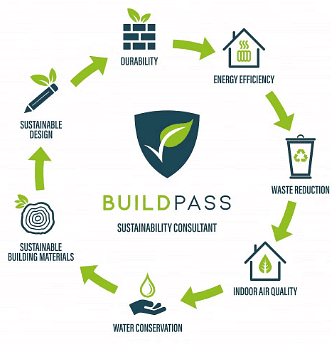 7 Principles of Sustainable Development
7 Principles of Sustainable Development - Separation of Roles: Different participants play distinct roles in ensuring a building is sustainable. Defining roles helps minimize resource use and environmental impact.
- Unified Approach for Sustainability: All building stages, from design to renovation, need to work together for truly green and sustainable buildings.
- Long-Term Impact: The goal is to ensure buildings have minimal environmental impact over their entire life cycle, leaving a small footprint.
Energy Audits of Large Industrial Consumers
In March 2007, it became a must for big energy-consuming units in nine industrial sectors to conduct energy audits. These units, known as "designated consumers," have a duty to hire certified energy managers.
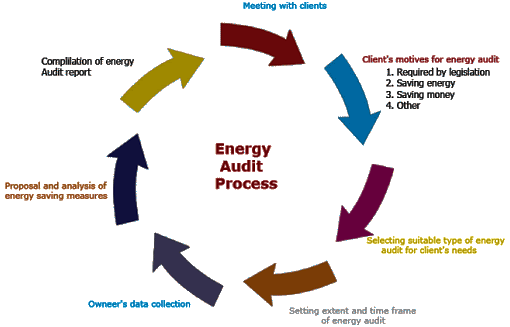
Annually, they are required to report data on how much energy they use and their efforts towards energy conservation.
Mass Transport
- The National Urban Transport Policy encourages using extensive public transport and non-motorized modes rather than personal vehicles.
- Cities like Delhi, Chennai, Bangalore, and Jaipur are improving their transportation by expanding the Metro Rail system and initiating mass transit projects like the Metro Bus project in Bangalore.
- Maharashtra's state government plans to introduce a congestion tax in cities with good public transport. This tax aims to reduce private car use in areas where enough public transport options are available.
Clean Air Initiatives
- In cities, the smoke from vehicles is a big cause of air pollution.
- To tackle this, steps have been taken, such as:
- Using Clean Fuel: Introducing compressed natural gas (CNG) in Delhi and other cities to make vehicles emit fewer harmful substances.
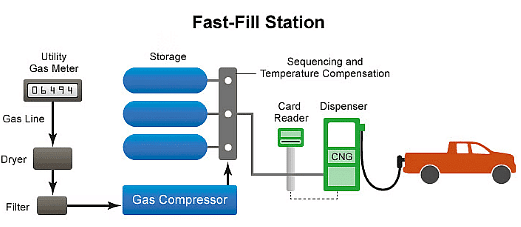 CNG Fueling Stations
CNG Fueling Stations - Getting Rid of Old Vehicles: Taking old, polluting vehicles off the road to improve air quality.
- Improving Public Transport: Making public transportation better and more efficient.
- Using Clean Fuel: Introducing compressed natural gas (CNG) in Delhi and other cities to make vehicles emit fewer harmful substances.
- Some states are encouraging people to use electric vehicles by providing subsidies.
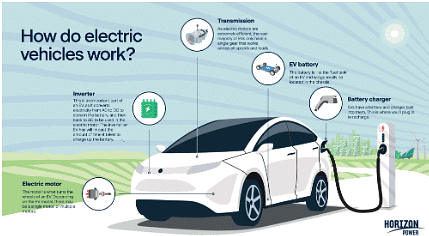 Electric Vehicles
Electric Vehicles - For power plants that use heat to generate electricity, they must install special filters called electrostatic precipitators to reduce pollution.
 Electrostatic Precipitators
Electrostatic Precipitators - In many cities, factories that produce a lot of pollution have either been closed down or moved away from where people live.
Promotion of Energy Saving Devices
The Bureau of Energy Efficiency started a program called "The Bachat Lamp Yojana."Under this program, households can swap their old light bulbs for energy-efficient CFLs, with the cost balanced using clean development mechanism credits.

Mandatory Solar Water Heaters

- Some states made it compulsory to install solar water heaters in places like hospitals, hotels, and large government or commercial buildings.
- Subsidies are offered to encourage the installation of solar water heaters in homes.
Promotion of Biofuels
- The Biodiesel Purchase Policy makes it necessary for the petroleum industry to buy biodiesel.
- Ethanol Blending of Gasoline requires blending 5% ethanol with gasoline in certain regions since January 1, 2003.
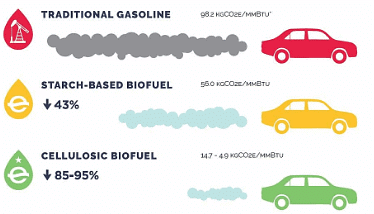
- Amendments in June 2022 advanced the target of 20% ethanol blending in petrol to 2025-26 from the original 2030 goal.
- More materials were made eligible for biofuel production.
Indian Solar Loan Program
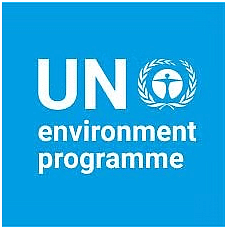 UNEP Logo
UNEP Logo
- In April 2003, the United Nations Environment Programme (UNEP) initiated a three-year program to offer credit in Southern India.
- This program aimed to help rural households finance the purchase of Solar Home Systems.
- Canara Bank and Syndicate Bank, along with their associated Regional Rural Banks, partnered with UNEP for this initiative.
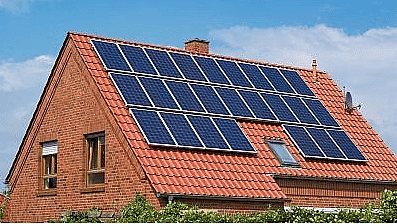 Solar Panel Installation on rooftops
Solar Panel Installation on rooftops - The program provides financial support through interest rate subsidies and technical assistance to develop institutional capacity for this type of finance.
National Initiative on Climate Resilient Agriculture (NICRA)
The ICAR started NICRA in 2010-11 with Rs.350 crores for the XI Plan to strengthen Indian agriculture.

NICRA aims to make farming more resilient to climate change, focusing on crops, livestock, and fisheries.
Objective: Improve the ability of Indian agriculture to deal with climate variability and change by using better production and risk management technologies.
Project Components
 Resilient changes for Climate Smart agriculture
Resilient changes for Climate Smart agriculture
- Strategic Research: Studying how to adapt and reduce the impact of climate change.
- Technology Demonstration: Testing new technologies on farmers' fields to cope with current climate variations.
- Research Grants: Providing funds for research to fill important research gaps.
- Capacity Building: Training different stakeholders involved in agriculture.
NICRA works towards making farming more robust and capable of handling challenges posed by unpredictable climate changes.
Strategic Research for NICRA
Leading research institutes of ICAR are working together to plan strategic research. They cover various areas like crops, horticulture, livestock, natural resource management, and fisheries.
Focus Areas:
- The initial emphasis is on key crops such as wheat, rice, maize, pigeon pea, groundnut, tomato, mango, and banana.
- Also, attention is given to livestock like cattle, buffalo, and small ruminants, along with marine and freshwater fish species crucial for the economy.
Major Research Themes:
- Vulnerability Assessment: Understanding how susceptible major production zones are to climate changes.
- Agro-Advisories: Connecting weather-based advice to contingency plans for farmers.
- Varieties Evolution: Developing crop varieties that can tolerate climatic stresses like drought, heat, frost, and flooding.
- Greenhouse Gas Monitoring: Keeping track of greenhouse gases in open fields during production.
- Adaptation and Mitigation Strategies: Developing strategies to cope with changing climate conditions, including enhancing water and nutrient use efficiency and promoting conservation agriculture.
- Pest Dynamics and Adaptation: Studying changes in pests, diseases, and adapting livestock to environmental changes.
- Research Collaboration: Seven major ICAR research institutes are collaborating, with the Central Research Institute for Dryland Agriculture (CRIDA), Hyderabad, leading the efforts.
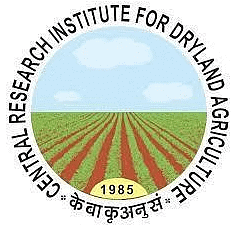 Logo of CRIDA
Logo of CRIDA - Field Demonstrations:
- Demonstrating best and cost-effective technologies in 100 vulnerable districts.
- Technologies include rainwater harvesting, in-situ moisture conservation, drought management, seed and fodder banks, and precision agriculture.
- Special focus on benefiting small farmers in rain-fed, coastal, and hill areas.
- Capacity Building: Developing the skills of scientists in cutting-edge areas is a core project activity.
- Awareness Programs: Multi-pronged programs are planned to raise awareness among all stakeholders about climate change challenges.
Fame India Programme
- The FAME India scheme began in April 2015 by the Union Minister for Heavy Industries and Public Enterprises.
- It aims to encourage the use of electric and hybrid vehicles.
- Initially, buyers get a 30% subsidy to make these vehicles more affordable.
- The plan is to gradually replace fossil fuel-based vehicles with the latest technology ones, resulting in a net saving of Rs 14,000 crore.
- The scheme is set to run for six years until 2020, targeting annual sales of 60-70 lakh electric and hybrid vehicles.
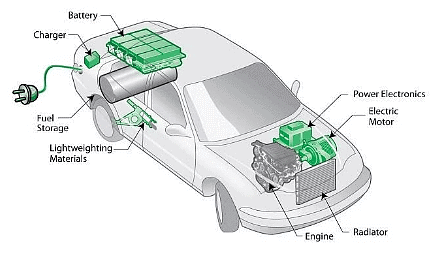 Hybrid Vehicles Design
Hybrid Vehicles Design
Long Term Ecological Observations (LTEO)
LTEO is a scientific effort to comprehensively study and understand the dynamics of different ecosystems, their changes over time, and the impact of various factors, especially climate change.
- Program Origin: LTEO is part of the 'Climate Change Action Programme' with a budget of Rs. 40 crores in the 12th Plan Period.
- Science Plan Release: A detailed Science Plan for LTEO was presented during the 21st Conference of Parties to the United Nations Framework Convention on Climate Change in December 2015.
- Program Phases: The initial phase involves establishing a network of field sites to assess the health of eight different biomes in the country, including Western Himalaya, Eastern Himalaya, North-Western Arid Zone, Central Indian Forests, Western Ghats, Andaman & Nicobar Islands, Jammu & Kashmir, and Sundarbans.
- Program Goals: LTEO aims to comprehend the reasons behind ecosystem changes in these biomes, considering both natural and human-induced factors. It focuses on understanding the effects on social-ecological responses through collaboration with scientific institutions.
- Key Activities Include:
- Experimental Work: Assessing changes in the structure and function of natural ecosystems.
- Monitoring Wildlife: Tracking populations of freshwater fish, birds, mammals, herbivores, carnivores, and animal movements.
- Observing Soil Processes: Studying soil processes in forests and grasslands.
- Monitoring Climatic Variables: Collecting data on biophysical climatic variables.
The National Adaptation Fund For Climate Change (NAFCC)
NAFCC is a fund created to support projects that help communities adapt to the changing climate. These projects, covering areas like agriculture, water, and forestry, are implemented through NABARD.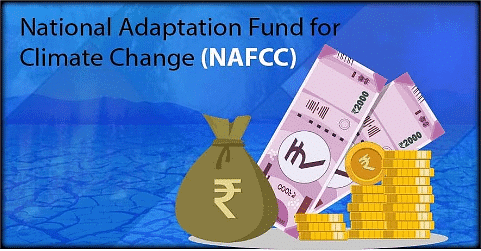
- Establishment: NAFCC was set up in 2015-16 as a Central Sector Scheme.
- Objective: The primary goal of NAFCC is to support specific adaptation activities that help reduce the negative impacts of climate change.
- Implementation Approach: Projects under this scheme are executed in a project mode.
- Eligible Sectors: Funding is available for adaptation projects in various sectors, including agriculture, animal husbandry, water, forestry, tourism, etc.

- Implementing Authority: The National Bank for Agriculture and Rural Development (NABARD) serves as the National Implementing Entity (NIE) for NAFCC.
Indian Cooling Action Plan
- India is the first country globally to create the ICAP, a document outlining actions to reduce cooling demand.

- Cooling is crucial for economic growth, and the ICAP covers aspects like lowering cooling demand, transitioning refrigerants, enhancing energy efficiency, and adopting better technologies over the next 20 years.
- The main goal is to provide sustainable cooling and thermal comfort for everyone while benefiting the environment and society economically.
- ICAP aims to:
 ICAP Objectives
ICAP Objectives- Reduce cooling demand by 20-25% by 2037-38.
- Cut refrigerant demand by 25-30% by 2037-38.
- Decrease cooling energy requirements by 25-40% by 2037-38.
- Recognize "cooling and related areas" as a research priority under the national S&T Program.
- Train and certify 100,000 servicing technicians by 2022-23, aligning with the Skill India Mission.
- Benefits include:
- Ensuring thermal comfort for all, including economically weaker sections.
- Achieving sustainable cooling with low greenhouse gas emissions.
- Boosting farmers' income through improved cold chain infrastructure, reducing produce wastage.
- Creating a skilled workforce for better livelihoods and environmental protection.
- Promoting domestic manufacturing (Make in India) of air-conditioning and cooling equipment.
- Supporting robust research and development for alternative cooling technologies to drive innovation in the sector.
Forest Landscape Restoration (FLR) and Bonn Challenge
- The Ministry of Environment, Forest and Climate Change (MoEFCC) partnered with The Union for Conservation of Nature (TUCN) to launch FLR and Bonn Challenge in India.
- The project's goal is to create and adapt best practices and monitoring protocols for Indian states, focusing on Forest Landscape Restoration (FLR) and the Bonn Challenge.
- The pilot phase spans 3.5 years and is initiated in Haryana, Madhya Pradesh, Maharashtra, Nagaland, and Karnataka. The plan is to expand it nationwide in subsequent phases.
- The Bonn Challenge is a global initiative aiming to restore 150 million hectares of deforested and degraded land by 2020 and 350 million hectares by 2030.
- At the UNFCC Conference of the Parties (COP) in Paris in 2015, India pledged to restore 13 million hectares by 2020 and an additional 8 million hectares by 2030 as part of the Bonn Challenge. This commitment is one of the largest in Asia.
Other "Critical Initiatives"
Besides the mentioned initiative, India is working on 24 additional critical projects. Detailed plans and institutional frameworks are being prepared for these initiatives.
 Some critical Initiatives
Some critical Initiatives
|
744 videos|1444 docs|633 tests
|
















